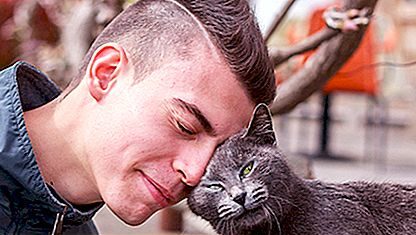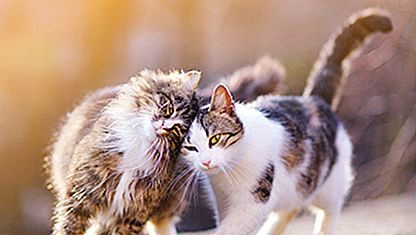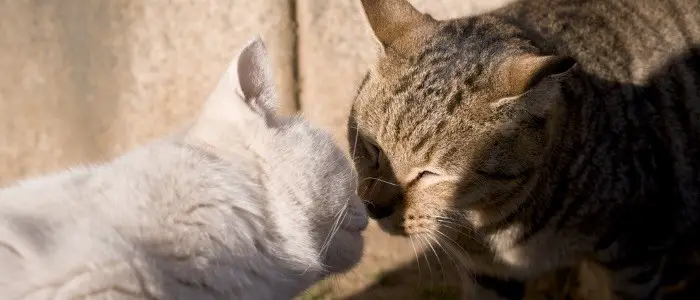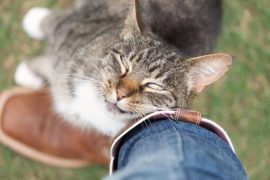What Does It Mean When Cats Rub Against You
This universal cat behavior is a compliment, experts say, because your cat communicates with you and marks you as its relatives.”Cats define their worlds with scent,” says Marilyn Krieger, a certified cat behavior consultant in California, also known as The Cat Coach. “It’s a way to identify their families, their friends and also their enemies. When a cat runs into you, it trades in your scent. It reinforces that you are a part of (their) group. It’s very sweet.”
Why do cats rub against you

Cats have scent glands that secrete pheromones in various parts of their body, including their cheeks, tails, foreheads, soles of feet, and anal areas. When they rub something or someone, they deposit this scent and it lingers, says Amy Shojai, a certified animal behavior consultant in Texas.
“Fragrance communication not only signals something when the cat goes through the movements, but the stinking message also sticks with long-term communication,” says Shojai.
“For other forms of communication, the cat and the other party must be present, for example, to see the friendly tail desire, or to hear the mustache and hiss,” says Shojai, the author of more than 30 animal care books, including COMPETENCE: Solving Behavior Problems in your household with multiple cats. “Vocal communication can only take one breath at a time,” she says. “But the scent continues to communicate even when the cat has left the building.”
Cat rubbing can also be a matter of claiming territory, but it goes beyond that, says Shojai. Territorial marking is more focused on objects and spaces and is usually related to rubbing and rubbing against the cheek.
What Does It Mean When Cats Rub Against You? To mark members of their tribe.

Wild cats rub against each other to mark members of their tribe. Photography © maximkabb | Thinkstock.
In colonies of ferocious cats, the feline mark each other as members of their tribe by rubbing and covering their heads under each other. This is a form of communication and acceptance, says Krieger. When cats transmit this behavior to humans, they mix their scents with ours and also claim acceptance. If a cat doesn’t love you, she probably won’t rub you, says Krieger.
When cats rub you, they say, “You are part of the group, I am part of you, we are all part of the same group,” she says.
Do cats target different places to rub on purpose?
Cats do not really focus on certain human body parts with different messages; they usually just go to which area is accessible, says Krieger.
However, if a cat rubs your face, it feels more intimate and it might be something that a cat only does if he especially likes you. One of the most striking cat rubs is head bones, that’s when cats bump their heads on you with oomph. This, Shojai says, signals, “I am your friend.”
“Not only does the head-moving / bunting behavior leave pheromones behind that identify friendly encounters, it also places the cat’s face and eyes in vulnerable positions,” she says. “So, it’s not only expressing kindness, but also trust. Usually it’s the most confident cat that also offers head bunting.”
Cats also like to walk close to us and rub their entire bodies against our legs. They often end this by wrapping their tails around our legs. “This is, again, a friendly greeting between cats, and by extension, the people they love and trust,” says Shojai.
Do you want your cat to rub against you? Strengthen the behavior!
As long as your cats don’t roll up your sleeves, you’ll probably enjoy it when they bump into you. Pet your cats if they rub against you to reinforce and reward behavior, Krieger recommends.
“When cats come to you
…
and they haven’t seen you all day and they rub you on the legs – if you stroke them automatically, you reinforce that behavior and bring your scent back to the cat, “she says.” They enjoy the affection and find it she likes it. “
Why does a cat actually give cups?
 Almost all cats give cups. Maybe you have noticed that they give cups in different ways? That’s right, cats can mean different things to it.
Almost all cats give cups. Maybe you have noticed that they give cups in different ways? That’s right, cats can mean different things to it.
Leave cups and scent
Scents are very important for the cat and are the most important means of communication. That is why a cat has scent glands in several parts of the body. They sit around the mouth, between the soles of the feet, at the tail base and around the anus. By rubbing something along, a cat puts off its scent. Have you ever seen those black greasy sweeps at doorposts or other places where the cat often passes by?
To draw attention
When a cat comes to you or sits on the couch with you, it usually gives ‘headbutts’. She pushes her forehead against your cheek or chin. This can vary from a light touch to a heavy headbump, but is always meant to be friendly. She saves this behavior for cats and people with whom she has a good relationship and leaves her scent as a social gesture.
Some cats use this form of head giving as attention-grabbing behavior , as owners usually respond enthusiastically to this expression of affection.
Give cups for greeting
When you get home, your cat will greet you. Sometimes she stands on her hind legs and gives cups with her forehead, but she can also stroke your legs, pull the tail along your calves and rub against you. This does not mean that she wants to make you a ‘property’, this is also a form of greeting and serves to renew the group scent.
Cats greet each other in a similar way: first smell nose to nose, then rub them with the flanks and then with the tails alongside each other. They usually end up sniffing under each other’s tails. That is politeness in cat language, so don’t be surprised if your own cat regularly holds her butt under your nose!
Stress
Items in the house also regularly receive cups, although it is actually more likely to rub their lips somewhere. This way, the cat releases its own scent, making it feel safe. These odor traces must be refreshed regularly, otherwise the odor will evaporate. Not to mention the staff who regularly go to all those places with a cloth and remove the precious smell! Low objects are usually marked by rubbing them with the chin.
Even with stress between cats or with fear of cats outside, a cat can give more cups to give itself a sense of safety.

